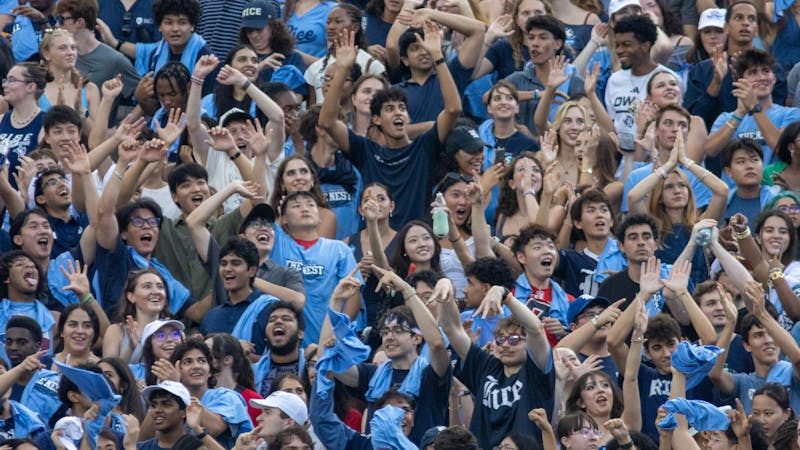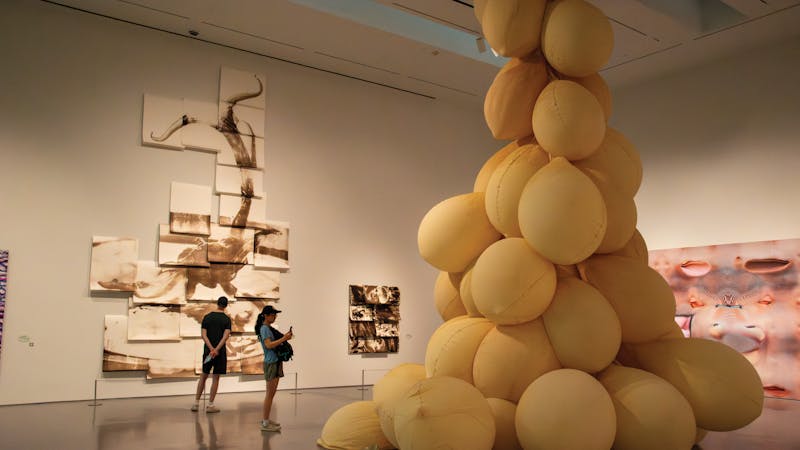Rice Media Center to show Texas Chain Saw Massacre
On Halloween night, the Rice Media Center will screen The Texas Chain Saw Massacre, with star Marilyn Burns and screenwriter Kim Henkel in attendance.
In 1974, The Texas Chain Saw Massacre was released. It rapidly gained notoriety for its brutal subject matter, exploitative style and unflinching realism. Today, the film is recognized as a hallmark of both independent filmmaking and the modern horror genre. Directed by Tobe Hooper and written by Henkel, who has lectured at Rice University in the past, the film's defining factor lies not in its excessive gore, but in its gritty authenticity and the unremitting sense of dread with which it fills its audiences.
The Thresher recently caught up with Burns and discussed her experiences with the film during production and after the release.
Thresher: What was your background prior to the film?
Marilyn Burns: I had been in a few minor roles in small projects, playing stand-ins and extras, but not any starring parts. I was at the University of Texas, Austin at the time. Hooper and Henkel held a casting call, and after a little talk and a read-through, I got the part.
Thresher: How did the fact that this was an independent production affect filming?
Burns: We were all locals. We were kids running around in the wilderness with a chainsaw. We had no fancy production crew or anything. At times during filming, I was thinking, "What the hell am I doing?" It was ridiculous.
Thresher: The chainsaw was real?
Burns: It was. Gunnar Hansen (who played Leatherface) made carrying the chainsaw look easy. We did take the blade off, but the chain was still going, and that chain can cut you just as easily. Come to think of it, it was really dangerous to have Gunnar chase me through the woods in the night with a functional chainsaw.
Thresher: Did anyone get hurt?
Burns: Hell yes - all of us. We used real gunpowder in some scenes, and various crew members were injured because of that. In one scene, they used a real knife on my finger without me knowing. The cut and the blood looked so real - because it was - that the filmmakers decided to use the footage. And there was the hammer. In the scene where my head is hit with a hammer, if you thought that was special effects, well, it was a real hammer. When you see the blood on my head, it's real.
Thresher: What was the set like?
Burns: We were not pampered like modern actors are. We were getting hosed down with Hershey's chocolate syrup, food coloring and dye. In the outdoors, all sorts of critters, mosquitoes and bees were getting stuck to the gunk on me. The syrup hardened in the sun and formed a sticky matte on my hair. We didn't have trailers to rest in. We didn't even have chairs. It was horrible. But I think it added to the film. The misery of the actors on the set gave the film a certain tone and undeniably made the film look more real.
Thresher: Looking back on it, how does it feel to be in a cornerstone of film history?
Burns: That movie had more color and history and rich stories behind it than any other film. You really couldn't get any more real than what we did. All practical effects were done with a 16-mm camera. Due to the rating system, we couldn't show as much as we'd have liked to. But I think that was better. The terror didn't have to rely on graphic bloodshed, but instead more on audio cues, suspense and psychological torture. In the end, it was a phenomenal experience.
The screening of Texas Chain Saw Massacre will take place 7 p.m. Oct. 31 at the Rice Media Center.
This interview has been edited for clarity and length.
More from The Rice Thresher

Rice loses to UH in Bayou Bucket Classic
The Bayou Bucket will remain with the University of Houston until at least 2030 after Rice football lost to the Cougars Saturday.

Moody Center’s new exhibit blurs the line between body and machine
Swelling latex sculptures, inspired by placentas and umbilical cords have taken up residence in the Moody Center for the Arts. The Barcelona-based artist Eva Fàbregas describes her pieces as forms that grow from “the guts of the architecture,” inflating and wrinkling as if they were alive.

Fizz users and moderators talk fame, challenges
During the volleyball team’s face-off against the University of Texas at Austin on Sept. 3, Jack Vu decided to have a little fun with the scoreboard. An anonymous poster had inaccurately mentioned that Rice beat UT on Fizz, so Vu decided to join in.

Please note All comments are eligible for publication by The Rice Thresher.